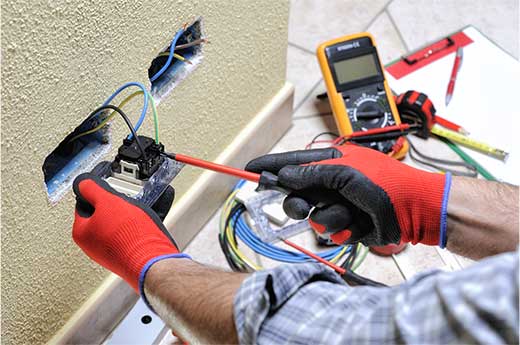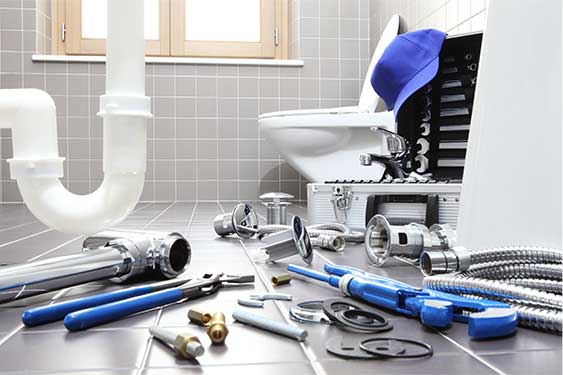“Plumbing is the lifeline of a home, and the pipes are its veins.” This saying couldn’t be more accurate regarding maintaining a property’s plumbing system.
Whether you’re a landlord, property investor, or real estate professional, the decision to repipe a house is one of your most critical investments. The choice between copper pipes and PEX piping is not just about cost but also durability, performance, and long-term value.
In this blog, we’ll explore the pros and cons of copper and PEX pipes, helping you make an informed decision for your next repiping job.
Let’s dive into the details and discover which piping material best fits your property.
Key Takeaways
PEX piping is a cost-effective option with flexibility and ease of installation, making it ideal for tight spaces and modern plumbing projects.
Copper pipes offer a longer lifespan and are reliable for high temperatures and outdoor use.
The choice between PEX and copper depends on factors like water chemistry, budget, and the specific needs of your plumbing system.
The Great Debate: Copper vs. PEX for Repiping
Regarding house repiping, the debate between copper vs. PEX has been ongoing. Both materials have strengths and weaknesses; the right choice depends on your property’s requirements.
Let’s break down the key differences.
What Are Copper Pipes?
Copper pipes have been a staple in plumbing for decades. Made from a natural material, they are known for their durability and ability to withstand high temperatures.
Many homeowners still prefer copper piping for its reliability and long lifespan.
What is PEX Piping?
PEX piping, or cross-linked polyethylene, is a modern plumbing material that has recently gained popularity. Its flexible material makes it easy to install, especially in tight spaces.
PEX is also resistant to pinhole leaks and corrosion, making it a favorite for plumbing projects.
Copper and PEX: Key Differences
The primary difference between copper and PEX pipes lies in their material properties. Copper is rigid and durable, while PEX is flexible and lightweight.
These differences impact their performance, cost, and installation process.
Why Many Homeowners Prefer Copper Piping
Copper pipes are a reliable option for properties that require a durable and long-lasting piping system. They are resistant to UV rays, making them suitable for outdoor plumbing.
Additionally, copper’s natural properties ensure safe drinking water.
Copper Pipes and Drinking Water
One of the main advantages of copper pipes is their ability to maintain water quality. Unlike plastic pipes, copper does not leach chemicals into the water, making it a safer choice for water supply lines.
The Reliability of Existing Copper Pipes
If your property already has copper pipes, sticking with copper during a repiping job may be more cost-effective. Copper’s longer lifespan ensures your investment will pay off in the long run.
Main Advantages of PEX
PEX piping offers several benefits, including lower cost, ease of installation, and corrosion resistance. Its highly flexible nature allows it to bend around corners, reducing the need for fewer fittings.
PEX Tubing in Tight Spaces
For properties with limited space, PEX tubing is a game-changer. Its flexibility makes it easy to install in tight spaces, such as crawl spaces and behind walls, without extensive demolition.
PEX and Cost Savings
One of the most significant advantages of PEX piping is its affordability. It is generally cheaper than copper in terms of material and labor costs.
This makes it an attractive option for budget-conscious property owners.
Copper vs. PEX for High Temperatures
When it comes to high temperatures, copper has the upper hand. It can handle extreme heat without degrading, making it ideal for hot water supply lines.
However, PEX can also perform well in most residential applications, provided the water temperature does not exceed its limits.
Copper vs. PEX for Outdoor Use
For outdoor plumbing, copper is the clear winner. Its resistance to UV light and ultraviolet rays makes it more durable outdoors.
PEX, on the other hand, is not UV-resistant and should not be used in areas exposed to sunlight.
PEX vs. Copper for New Construction
In new construction, the choice between PEX and copper often comes down to budget and project requirements. PEX is easier and faster to install, while copper offers a more traditional and durable solution.
Proper Installation of Copper and PEX Pipes
Proper installation is crucial for optimal performance regardless of the material you choose. Hiring a professional plumber ensures that your piping system is installed correctly, reducing the risk of leaks and other issues.
Preventing Leaks with Both Materials
Both PEX and copper can prevent leaks when installed properly. Crimp fittings for PEX and soldering for copper are effective methods to ensure a secure connection.
Regular Maintenance for Long-Term Performance
Regular maintenance is essential to maximize the lifespan of your piping system. This includes checking for signs of corrosion, leaks, and other issues that could compromise the system's performance.
Choosing the Right Material for Your Repiping Job
The decision between copper vs. PEX ultimately depends on your property's needs. Consider factors like water chemistry, budget, and the specific requirements of your plumbing projects.
Consult a Professional for Your House Repiping
When in doubt, consult a professional plumber. They can assess your property and recommend the best material for your repiping job, ensuring a durable and cost-effective solution.
Copper or PEX? Let the Experts Decide!
Whether installing copper pipes for durability or connecting PEX pipes for flexibility, ensuring smooth water flow through your property is essential.
At Powerhouse Home Services, we help you navigate the average costs and the need for specialized tools. With a focus on cost-effectiveness and the unique benefits of both materials, we ensure your plumbing system is built to last even in challenging water conditions.
Contact us today to avail our plumbing services!
FAQs
1. Are there other materials besides copper and PEX for repiping?
While copper and PEX are the most common choices, other materials like galvanized steel or CPVC are sometimes used. However, these options are less popular due to limitations like corrosion or brittleness.
2. Can ultraviolet rays damage PEX pipes?
Yes, ultraviolet rays can degrade PEX pipes over time, making them unsuitable for outdoor use. If you need outdoor plumbing, copper is a better choice as it is UV-resistant.
3. Which of the two materials is more environmentally friendly?
Copper is considered more environmentally friendly than other materials because it is natural and fully recyclable. PEX, while cost-effective, has limited recyclability due to its plastic composition.






